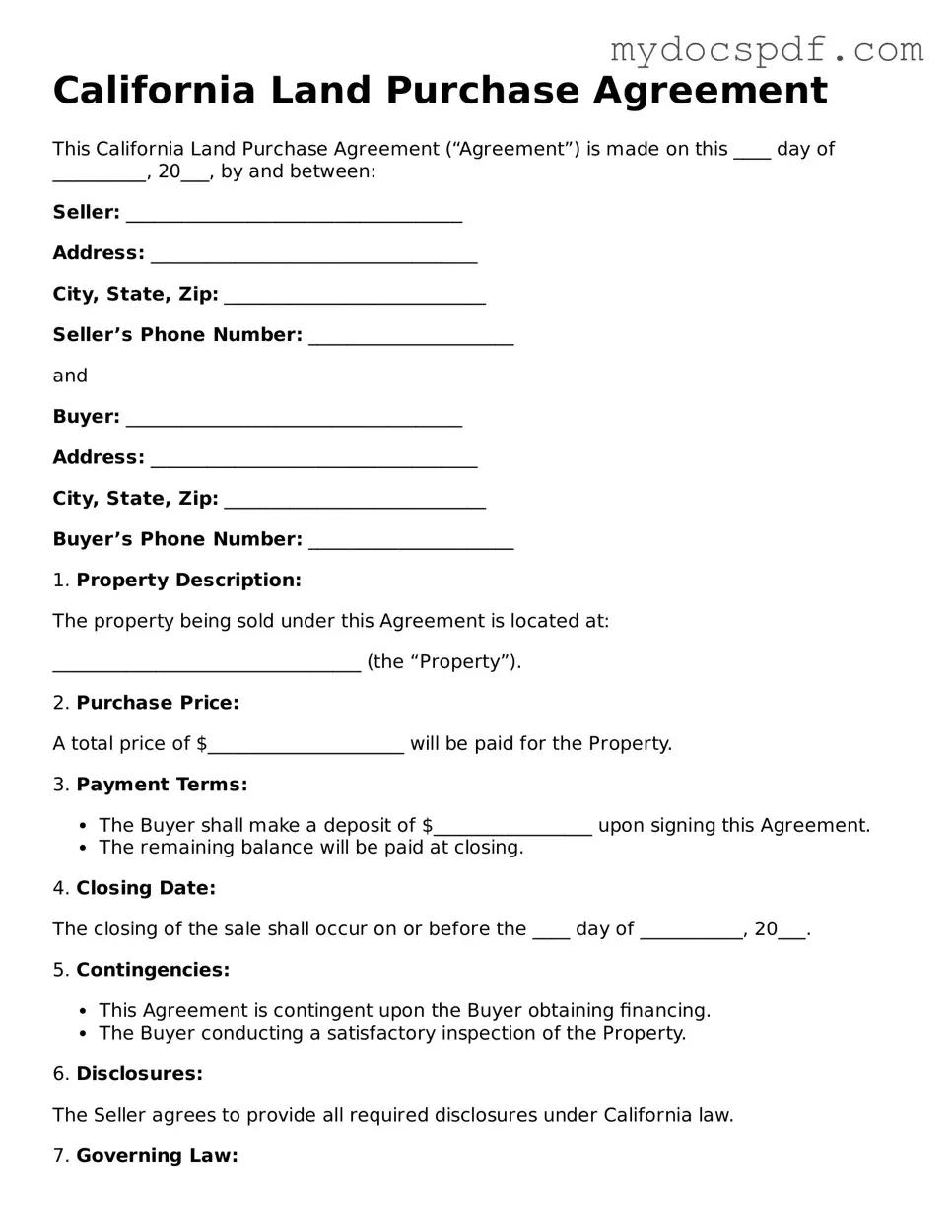California Land Purchase Agreement
This California Land Purchase Agreement (“Agreement”) is made on this ____ day of __________, 20___, by and between:
Seller: ____________________________________
Address: ___________________________________
City, State, Zip: ____________________________
Seller’s Phone Number: ______________________
and
Buyer: ____________________________________
Address: ___________________________________
City, State, Zip: ____________________________
Buyer’s Phone Number: ______________________
1. Property Description:
The property being sold under this Agreement is located at:
_________________________________ (the “Property”).
2. Purchase Price:
A total price of $_____________________ will be paid for the Property.
3. Payment Terms:
- The Buyer shall make a deposit of $_________________ upon signing this Agreement.
- The remaining balance will be paid at closing.
4. Closing Date:
The closing of the sale shall occur on or before the ____ day of ___________, 20___.
5. Contingencies:
- This Agreement is contingent upon the Buyer obtaining financing.
- The Buyer conducting a satisfactory inspection of the Property.
6. Disclosures:
The Seller agrees to provide all required disclosures under California law.
7. Governing Law:
This Agreement shall be governed by and construed in accordance with the laws of the State of California.
8. Signatures:
IN WITNESS WHEREOF, the parties hereto have executed this Agreement as of the date first above written.
Seller’s Signature: __________________________
Date: ______________________________________
Buyer’s Signature: __________________________
Date: ______________________________________
